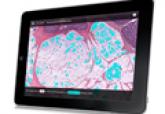For Residents

Learning Dermatopathology in the Digital Age
In recent years, advances in technology have allowed the study of pathology to transition into the digital realm. Histologic sections can now be...
Roman Bronfenbrener, MD
From the Department of Dermatology, State University of New York, Stony Brook.
The author reports no conflict of interest.
Correspondence: Roman Bronfenbrener, MD, 181 N Belle Mead Rd, Ste 5, East Setauket, NY 11733 (roman.bronfenbrener@stonybrookmedicine.edu).

Gram Stain
The Gram stain is invaluable in classifying bacteria, and a properly performed test can narrow the identification of a causative organism based on cellular morphology. Although it is more technically complex than other bedside diagnostic maneuvers, it can be rapidly performed once the sequence of stains is mastered. The collected sample is smeared onto a glass slide and then briefly passed over a flame several times to heat-fix the specimen. Caution should be taken to avoid direct or prolonged flame contact with the underside of the slide. After fixation, the staining can be performed. First, crystal violet is instilled onto the slide and remains on for 30 seconds before being rinsed off with sink water. Then, Gram iodine is used for 30 seconds, followed by another rinse in water. Next, pour the decolorizer solution over the slide until the runoff is clear, and then rinse in water. Finally, flood with safranin counterstain for 30 seconds and give the slide a final rinse. After air-drying, it is ready to be interpreted.7
Final Thoughts
Although the modern dermatologist has access to biopsies, cultures, and sophisticated diagnostic techniques, it is important to remember these useful bedside tests. The ability to rapidly pin a diagnosis is particularly useful on the consultative service where critically ill patients can benefit from identification of a causative pathogen sooner rather than later. Residents should master these stains in their training, as this knowledge may prove to be invaluable in their careers.

In recent years, advances in technology have allowed the study of pathology to transition into the digital realm. Histologic sections can now be...
